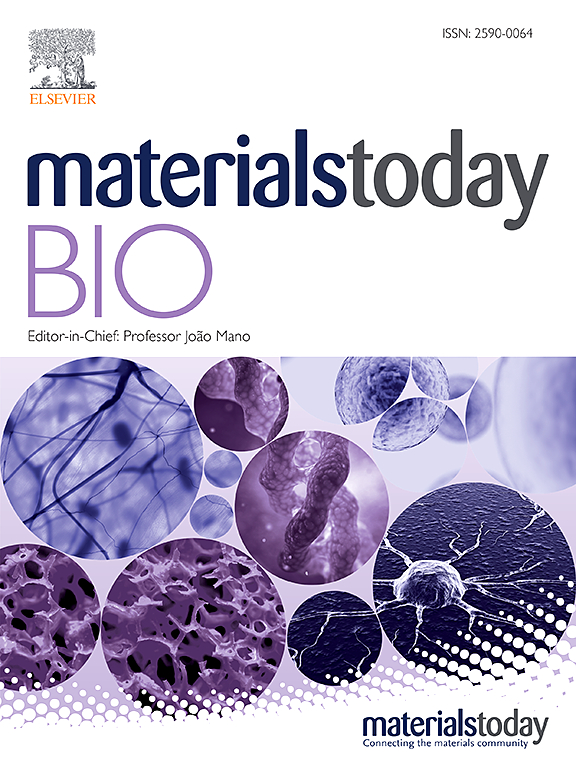Innovative 3D-printed porous tantalum cage with non-window design to accelerate spinal fusion: A proof-of-concept study
IF 8.7
1区 医学
Q1 ENGINEERING, BIOMEDICAL
引用次数: 0
Abstract
An interbody fusion cage is crucial in spine fusion procedures, serving to restore physiological vertebral alignment and reestablish spinal stability. However, conventional fusion cages often face challenges related to insufficient osteointegration and the requirement for substantial bone grafting, which may result in incomplete fusion and prolonged recovery periods. In this study, we harnessed the osteointegration advantages of tantalum (Ta), in conjunction with advanced 3D printing technology, to develop a novel non-window-type Ta cage. The mechanical and biological characteristics of the cage were comprehensively evaluated through mechanical testing, in vitro cellular assays, and in vivo sheep anterior cervical discectomy and fusion models. The results indicated that the 3D-printed porous tantalum (3D-pTa) cage, with mechanical properties analogous to those of trabecular bone, exhibited superior bone ingrowth and osseointegration performance, achieving excellent intervertebral fusion without the need for bone grafting, thereby enhancing cervical vertebra stability. Moreover, we performed a pilot clinical trial to assess the performance of non-window-type 3D-pTa cages in single-level posterior lumbar interbody fusion. The results demonstrated that 3D-pTa achieved favorable clinical outcomes up to the 12-month follow-up period. These results highlight the significant clinical potential of the 3D-pTa cage for spinal fusion applications.

求助全文
约1分钟内获得全文
求助全文
来源期刊

Materials Today Bio
Multiple-
CiteScore
8.30
自引率
4.90%
发文量
303
审稿时长
30 days
期刊介绍:
Materials Today Bio is a multidisciplinary journal that specializes in the intersection between biology and materials science, chemistry, physics, engineering, and medicine. It covers various aspects such as the design and assembly of new structures, their interaction with biological systems, functionalization, bioimaging, therapies, and diagnostics in healthcare. The journal aims to showcase the most significant advancements and discoveries in this field. As part of the Materials Today family, Materials Today Bio provides rigorous peer review, quick decision-making, and high visibility for authors. It is indexed in Scopus, PubMed Central, Emerging Sources, Citation Index (ESCI), and Directory of Open Access Journals (DOAJ).
 求助内容:
求助内容: 应助结果提醒方式:
应助结果提醒方式:


